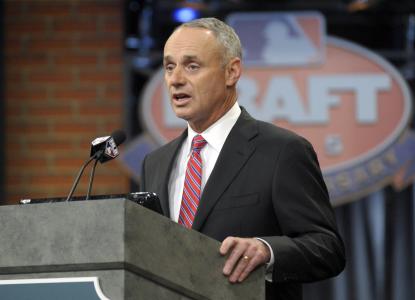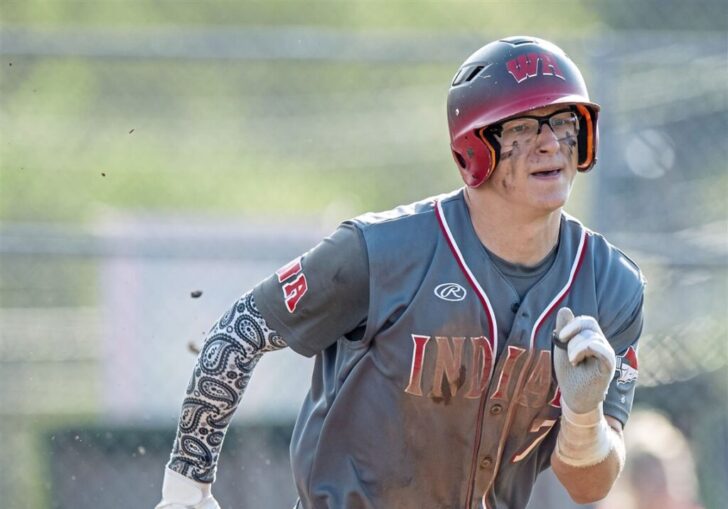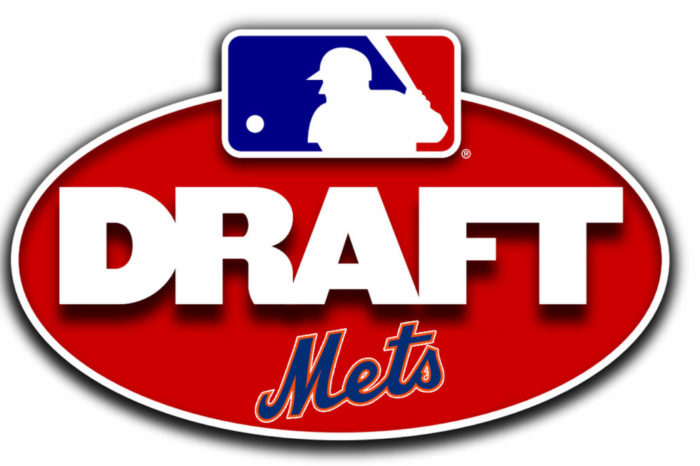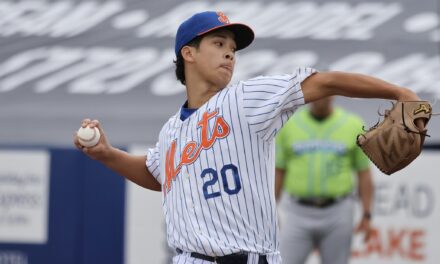
All of the hard work over the past year by scouting departments across baseball has led up to… something resembling a draft.
The 2020 First-Year Player Draft, as we’ve never seen it before, kicks off Wednesday night at 7 p.m. ET.
The Mets have the 19th overall selection — it’ll be their only action on Day One before picking up with rounds two through five on Thursday. And that’s it.
That’s right, this year’s proceedings will be the shortest in league history with just 160 picks on the docket. It’s just one more effect of the COVID-19 pandemic on Major League Baseball in 2020.
Thanks to Zack Wheeler‘s departure over the winter, the Mets have an extra pick between the second and third rounds. That could ultimately be huge, with every selection taking on more importance.
What are the ramifications of such a short draft?
The answer to that question is, simply, that we won’t know until things get underway.
It isn’t explicitly clear how teams are adjusting their draft strategies to cope with fewer picks, which means less bonus pool money available to spend. Rumors have started swirling regarding the possibility of a couple of teams “punting” on their picks in the first three rounds, since an unsigned player in that range gives the team a compensation selection the following year.
How awful of a look would that be for the game? A significant one, if you ask this fan of the game.
It’s impossible to name every solid major leaguer that was picked after the fifth round in his respective draft, but players hoping to follow the Jacob deGrom and Jeff McNeil paths are effectively short on luck.
Undrafted players can sign after Day Two, but their bonuses are capped at $20 thousand. Why take that when you can go back to school and position yourself for much more down the line?
We’ve already seen some solid high schoolers themselves from the pool over the past week, and it might make sense for more players to attend school rather than sign with a team that claims its cash-strapped. Money will be saved either way, as signing bonuses will be paid up to $100 thousand this year and the remainder split over 2021 and 2022.
To reiterate, it won’t really be clear how teams are attacking the circumstances until we get deeper into Day Two. Will teams avoid high schoolers all together? Sign a couple of college seniors to go big on one guy? Avoid any risk with such a small margin for error? Take a reliever unusually early with the hope he could help in a shortened 2020 MLB season?
It will be interesting to watch it all unfold.

Austin Hendrick/ Photo by Steph Chambers/Pittsburgh Post-Gazette
Who are the Mets targeting in the first round?
Who’s to say?
Rumors after the first five or six (let alone 19 or 20) picks are typically scarce, but that has been amplified this year. With scouts having seen four weeks of college baseball and, in some regions, zero high school ball, teams have had much less time to drill down on “their guy.”
With that being said, mock drafts have been all over the place for the Mets at 19.
Going by the industry leaders and their comments, it appears that the Mets are targeting college pitching, a particularly deep demographic this year. Some combination of Georgia’s Cole Wilcox, Oklahoma’s Cade Cavalli, Tennessee’s Garrett Crochet, and Louisville’s Bobby Miller should be available in that range.
College bats like Garrett Mitchell of UCLA and Justin Foscue from Mississippi State have received buzz in the teens as well.
(Relevant side note: the last two times the Mets have picked in the back half of the first round, they’ve gone this exact route — Justin Dunn was the 19th pick in 2016 and David Peterson went at 20 in 2017. Yes, Brodie Van Wagenen was not in the organization then, and his first year at the helm saw a high school bat taken in Brett Baty at 12. But Van Wagenen doesn’t run the draft, and nearly the entire amateur scouting department is still intact from the Dunn/Peterson years.)
There is also a slew of interesting high school players, including pitchers Nick Bitsko, Mick Abel, and Jared Kelley, and outfielders Austin Hendrick and Pete Crow-Armstrong. Catcher (for now) Tyler Soderstrom has gotten a late push as well. Like I mentioned earlier, prep players could end up being a bigger risk than normal.
I’m not in the business of predicting these types of things, but a young, power arm like Bitsko or Kelley would be a tantalizing addition to the Matthew Allan and Josh Wolf-led crop of raw pitching prospects in the organization.
When will the draftees make their professional debuts?
As murky as the future of major league baseball appears right now, the outlook for minor league baseball is straight black sewage water.
It’s all but confirmed that there will be no official MiLB season in 2020, so this year’s draft class won’t start accumulating the stats you see on Baseball-Reference until 2021.
However, that doesn’t mean they’ll be stagnant until next March when spring training gets underway. It sounds like there will be some sort of expanded instructional league that will operate in Florida and Arizona so prospects, including the recently-drafted, can get their reps in.
What will be interesting to follow is whether college players from this year’s class go straight to High-A to open 2021 or are held more conservatively in Low-A since they won’t have a short season in 2020.
Final word
Speaking personally, it’s going to be weird to not be glued to MLB.com for an eight-hour Day Three this year. I can’t even imagine what it feels like for the area scouts, who have been following players for multiple seasons leading up to right now. Typically, each area scout gets at least a couple of his guys picked each cycle. Now, most of them will have to literally stand up on the table to get his player’s name called.
Baseball is changing, and it’s impossible to know what the economics of the game will look like in two or three years. But it’s days like these that should give us at least a peek into the direction we’re headed.
Keep it locked into @Metsmerized and @Mets_Minors for all of the draft coverage coming your way.
















